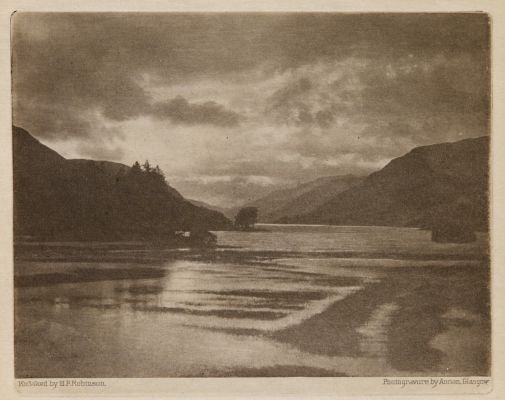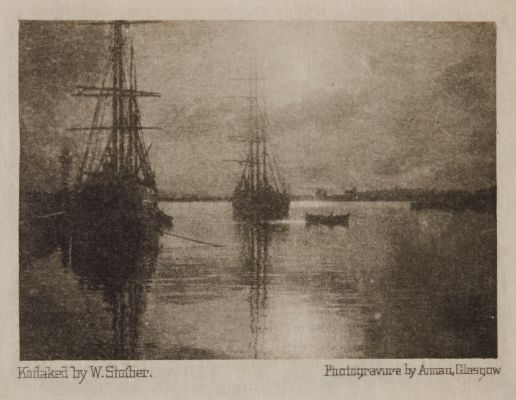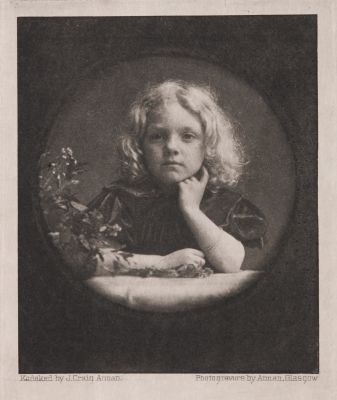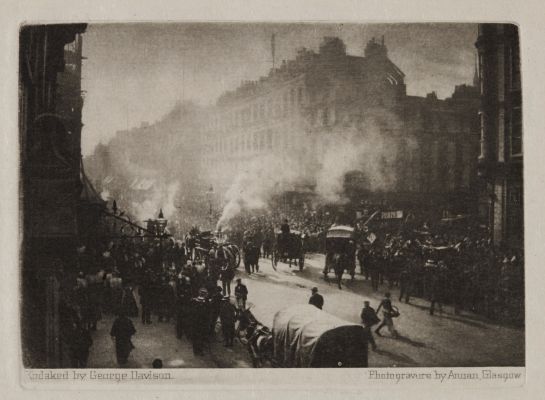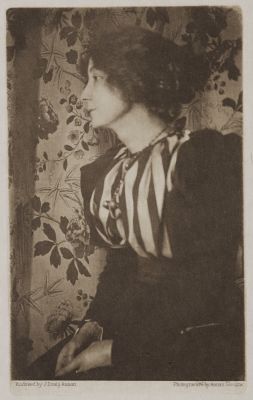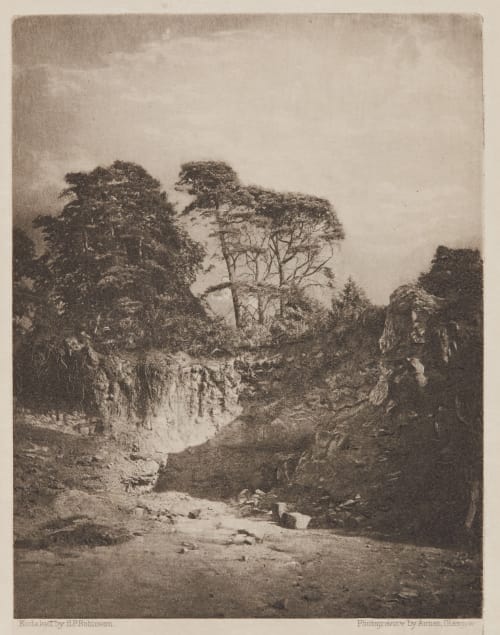
Title
Rusthall QuarryArtist
Robinson, Henry Peach (British, 1830-1901)Publication
Kodak Portfolio - Souvenir of the Eastman Photographic Exhibition 1897, a Collection of Kodak Film Pictures by Eminent PhotographersDate
1897Process
PhotogravureAtelier
James Craig AnnanImage Size
11 x 9 cm
To highlight the virtues of the Kodak’s roll film cameras, George Davison persuaded several of his photographic friends to try them so that their results could be used for advertising or promotion. Among those taking part were Paul Martin, Eustace Calland, J. Craig Annan and, notably, Frank M. Sutcliffe, whose great enthusiasm led him to try out virtually every new Kodak camera until 1906. [1]
From the introduction… This edition de luxe of 14 photographs by eminent photographers is a souvenir of the Eastman Photographic Exhibition, held at the New Gallery, Regent Street, London, from 27th October to 16th November, 1897. It is aimed chiefly to exemplify some of the pictorial applications of the Kodak and film photography. The pictures, without exception, are Kodak film pictures, and the assortment is specially arranged to illustrated a few of the various classes of subjects which can all be effectively exploited by Kodak photography. Landscape, seascape, architectural pictures, portraiture pure and simple done at home, portrait head and shoulders, portraiture of three-quarter figure, portraiture of the whole figure with drawing-room surroundings, will be found pictorially exemplified in this little volume. We wish to express our hearty thanks to the eminent photographers who have kindly lent us their film negatives, from which the fine reproductions have been made by Mr. J. Craig Annan, of Messrs. Annan & Sons.
The photogravures are small pictorial gems by some of the leading photographers of the day.
In response to a request for a note upon his picture, Mr. H. P. Robinson kindly writes as follows: This little known but very picturesque dell is part of the beautiful Rusthall Common, near Tunbridge Wells, of which it is part. Although it is most accessible it is so hidden in the hollow between the rocks of the disused quarry and some rising ground and tall trees, that few lovers of the picturesque find their way into it. For thirty years it has been a happy hunting-ground that almost seemed my own, both for photography and natural history. I feel ashamed of appropriating so much beauty to myself, and should be glad to see other photographers at work in it. There are plenty of subjects for all. We think no one can fail to recognize in this picture a delightful effect of a kind which is associated in our minds with many beautiful old engravings. The negative was taken with a No. 4 Cartridge Kodak. [2]
References
[1] Weaver M. British Photography in the Nineteenth Century : The Fine Art Tradition. Cambridge: Cambridge University Press; 198 (Coe, Brian George Davison: Impressionist and Anarchist.) p. 232
[2] Kodak Portfolio – Souvenir of the Eastman Photographic Exhibition 1897, a Collection of Kodak Film Pictures by Eminent Photographers
